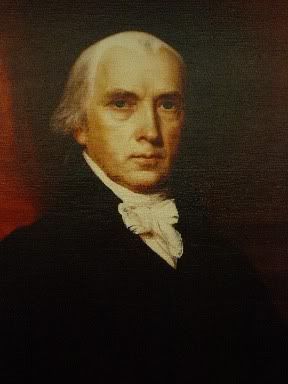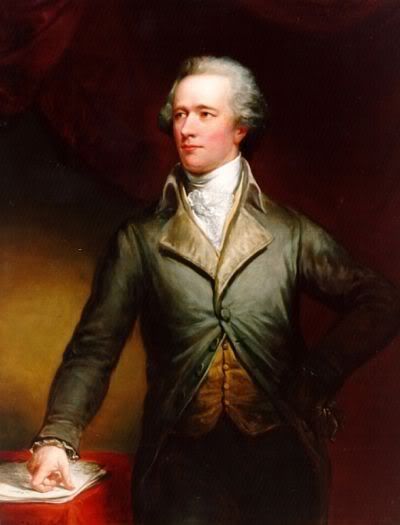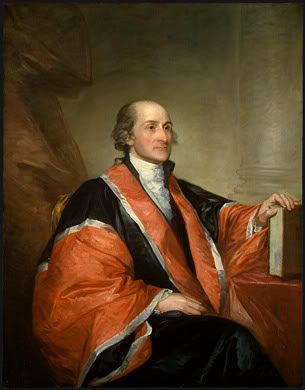 James Madison, also called the “Father of the Constitution,” since he was its primary author, is the first president to have served in the US Congress and was a leader in the first US Congress. He is said to have drafted the Bill of Rights as well (based on the Virginia Declaration of Rights) and so is also known as the “Father of the Bill of Rights” as well. Madison was a firm believer in the necessity of checks and balances within the government. He helped to form the Republican Party (or later called the Democrat- Republican Party) with Thomas Jefferson in opposition to federalists especially against Hamilton’s National Bank and the Jay treaty. He also helped to draft the Kentucky and Virginia Resolutions, also with Jefferson, in opposition to the Alien and Sedition Acts of 1798. Madison then served as Jefferson’s Secretary of State and supervised the Louisiana Purchase. As President, Madison led the nation in the War of 1812 and by 1815 he supported a National Bank, a strong military and high tariffs.
James Madison, also called the “Father of the Constitution,” since he was its primary author, is the first president to have served in the US Congress and was a leader in the first US Congress. He is said to have drafted the Bill of Rights as well (based on the Virginia Declaration of Rights) and so is also known as the “Father of the Bill of Rights” as well. Madison was a firm believer in the necessity of checks and balances within the government. He helped to form the Republican Party (or later called the Democrat- Republican Party) with Thomas Jefferson in opposition to federalists especially against Hamilton’s National Bank and the Jay treaty. He also helped to draft the Kentucky and Virginia Resolutions, also with Jefferson, in opposition to the Alien and Sedition Acts of 1798. Madison then served as Jefferson’s Secretary of State and supervised the Louisiana Purchase. As President, Madison led the nation in the War of 1812 and by 1815 he supported a National Bank, a strong military and high tariffs.Following his Presidency, he returned to the Virginia Legislature, and in 1829 at seventy-eight, Madison helped Virginia revise its state Constitution where apportionment was the main issue, in questioning how much each slave was worth, and how much apportionment should be given to them in each territory. Some say this question of slavery drove Madison to the edge of despair. Madison lived on until 1836, increasingly ignored by the new leaders of the American polity and died at Montpelier on June 28, the last of the founding fathers to die.
 Alexander Hamilton was born in the British West Indies and educated in America. During the Revolutionary War he joined the New York militia, eventually to become an artillery captain. Hamilton soon became a senior advisor to Gen. George Washington and was a main leader in the Battle of Yorktown. Originally elected to the Continental Congress, Hamilton left to practice law and to assist in founding the Bank of New York. He was elected to the New York Legislature and was the only representative from New York to sign the Constitution. During Washington’s Presidency, Hamilton served as Treasury Secretary and was a strong supporter of a strong centralized government. Through his philosophy of “implied powers” given to the federal government within the Constitution, Congress funded national debt, created a National Bank and established taxes and tariffs. Because of his strong Federalist beliefs, parties began to form with Hamilton in the Federalists and Madison and Jefferson in the Democratic—Republican Party. In 1798 Hamilton organized and led a national army against the French. After his party lost the election of 1800 to Jefferson and Aaron Burr, Hamilton founded the New York Post to publicize his Federalist ideas. Hamilton was eventually challenged in a duel by Aaron Burr, in which he lost his life.
Alexander Hamilton was born in the British West Indies and educated in America. During the Revolutionary War he joined the New York militia, eventually to become an artillery captain. Hamilton soon became a senior advisor to Gen. George Washington and was a main leader in the Battle of Yorktown. Originally elected to the Continental Congress, Hamilton left to practice law and to assist in founding the Bank of New York. He was elected to the New York Legislature and was the only representative from New York to sign the Constitution. During Washington’s Presidency, Hamilton served as Treasury Secretary and was a strong supporter of a strong centralized government. Through his philosophy of “implied powers” given to the federal government within the Constitution, Congress funded national debt, created a National Bank and established taxes and tariffs. Because of his strong Federalist beliefs, parties began to form with Hamilton in the Federalists and Madison and Jefferson in the Democratic—Republican Party. In 1798 Hamilton organized and led a national army against the French. After his party lost the election of 1800 to Jefferson and Aaron Burr, Hamilton founded the New York Post to publicize his Federalist ideas. Hamilton was eventually challenged in a duel by Aaron Burr, in which he lost his life. John Jay was one of the Founding Fathers and was the first Chief Justice of the United States. During the American Revolution (1775-1783) Jay was the minister to Spain and France and was a key player in the treaty with Great Britain (the “Jay Treaty”). Following the Revolution, Jay was President of the Continental Congress from 1778-9 and 1789-95. Jay returned to New York after the Congress where he served as Governor from 1795-1801 and led the state’s opposition to slavery. His first two endeavors to end slavery in the state were in vain while the third in 1799 was a success. Jay saw the emancipation of all New York slaves before his death in 1829.
John Jay was one of the Founding Fathers and was the first Chief Justice of the United States. During the American Revolution (1775-1783) Jay was the minister to Spain and France and was a key player in the treaty with Great Britain (the “Jay Treaty”). Following the Revolution, Jay was President of the Continental Congress from 1778-9 and 1789-95. Jay returned to New York after the Congress where he served as Governor from 1795-1801 and led the state’s opposition to slavery. His first two endeavors to end slavery in the state were in vain while the third in 1799 was a success. Jay saw the emancipation of all New York slaves before his death in 1829.

No comments:
Post a Comment